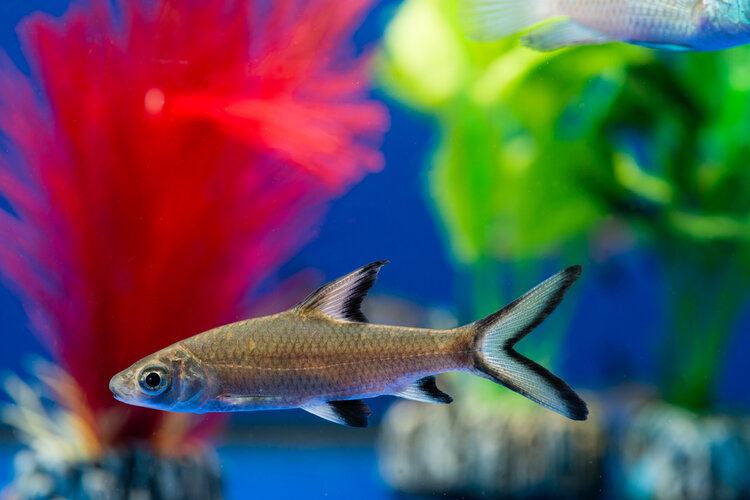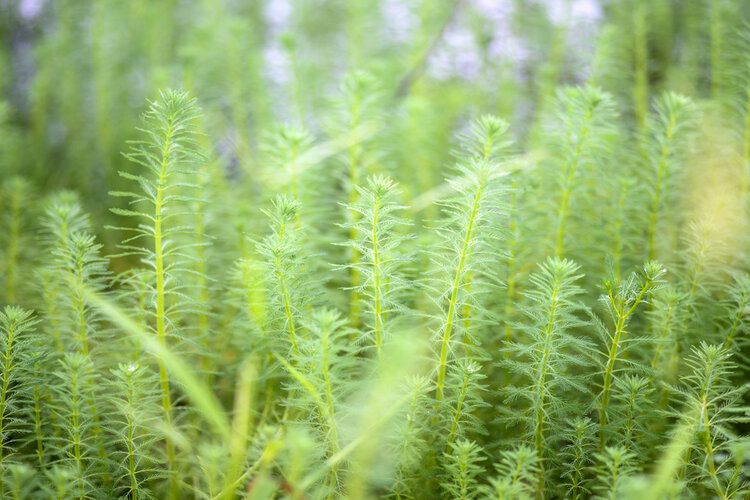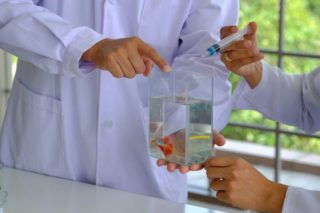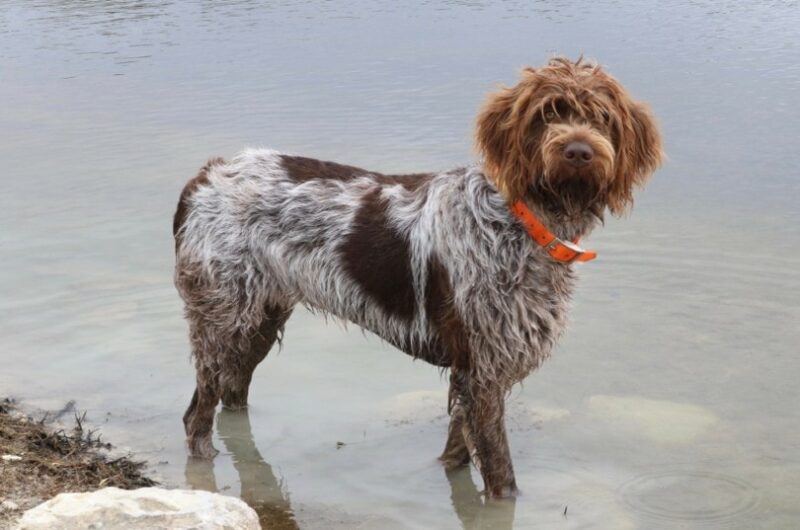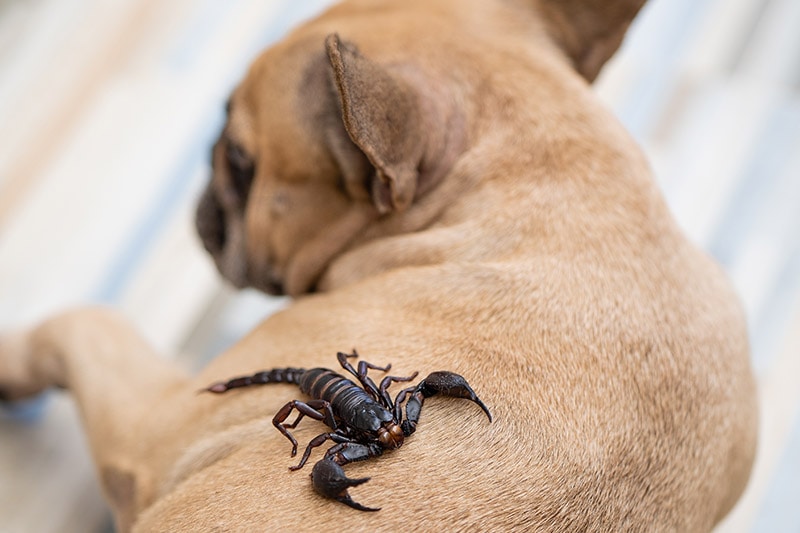5 Great Plants for Rasboras in 2024 – Reviews & Buyers Guide

Updated on
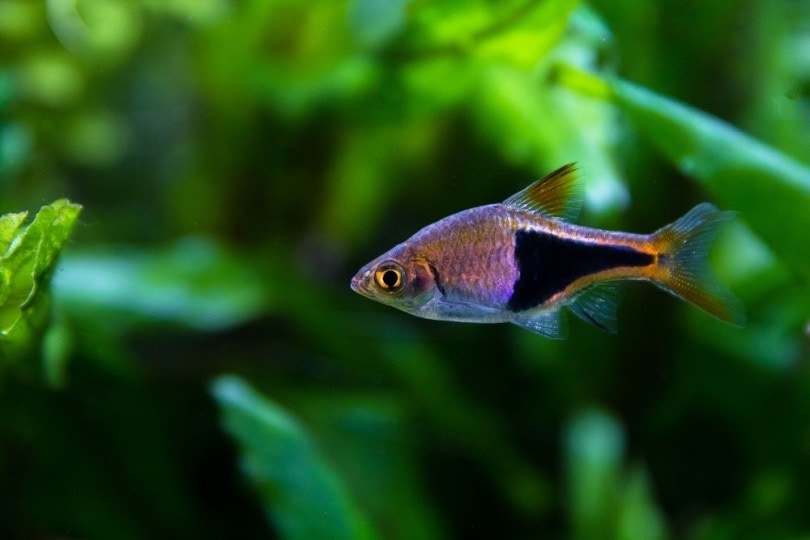
Just like any other fish you might keep at home in an aquarium, there are certain things that you need to put into the tank to make your fish feel at home. One of these things you will want to consider putting in the rasbora tank are live plants.
Of course, there are plenty of aquatic and aquarium plants, which makes choosing the right ones pretty hard. This is what we are here for today, to help you find the best plants for rasboras.
 A Quick Comparison if Our Favourites in 2024
A Quick Comparison if Our Favourites in 2024
| Rating | Image | Product | Details | |
|---|---|---|---|---|
| Best Overall |

|
Java Fern |
|
Check Price |
| Best Value |

|
Java Moss |
|
Check Price |
| Premium Choice |

|
Duckweed |
|
Check Price |

|
Amazon Sword |
|
Check Price | |

|
Cryptocoryne Wendtii |
|
Check Price |
The 5 Great Plants For Rasboras
Although there are plenty of plants that will work, here are 5 plants that we feel work very well for rasboras.
1. Java Fern
| Care Level: | Easy |
| Light: | Low to moderate |
| Substrate: | Driftwood, porous rock |
| Goldfish Proof Score: | 99% |
| Water Purifying Score: | 35% |
- Minimal maintenance and pruning
- Vibrant green
- Hardy
- Great for water purity
- Large leaves provide shelter to fish
- Java Fern (12–14 inches)
- Narrow Leaf Java Fern (10–12 inches)
- Windelov/Lace Java Fern (7–8 inches)
- Trident Java Fern (8–10 inches)
- Needle Leaf Java Fern (5–6 inches)
- Petite Java Fern (3–4 inches)
- Philippine Java Fern (4–12 inches)
- Latifolia/Undulata Java Fern (8–12 inches)
The Java fern is always a go to option for aquarium hobbyists, which is true for many reasons. One of the main reason why this makes for a great aquarium plant is due to its hardiness, combined with its ease of maintenance.
Java ferns can survive in quite a wide variety of temperatures and water conditions, and yes, this includes the same water conditions which rasboras require to live.
Moreover, Java ferns don’t need too much light and they don’t need CO2 supplementation either, both aspects which help make life a bit easier. Java ferns can grow to 10 inches in height, which for a small tank makes it a good midground or background plant, although it could be used as a foreground plant in larger tanks.
The fairly long and wide leaves make for great hiding spots for rasboras, and they have a really nice vibrant green color too.
2. Java Moss
| Care Level: | Easy |
| Light: | Low to high |
| Substrate: | Sand, gravel, driftwood, porous rock |
| Goldfish Proof Score: | 80% |
| Water Purifying Score: | 75% |
- Easy to care for
- Creates lush carpets
- Hardy
- Great for water purity in large quantities
- Tall enough to shelter fish
Java moss is another go-to option for aquarists, and once again, it also has to do with its ease of maintenance, but also more than that. Java moss does fine in moderate conditions, and it will thrive in the same tank conditions as your rasboras need to live.
This plant is not overly demanding. It’s very easy to grow and nearly impossible to kill. It has medium lighting requirements, although it will survive in low light conditions too, but it just won’t grow as fast.
While CO2 supplementation is not necessary, it is recommended for very fast growth. Under the right conditions, Java moss can grow very fast.
Now, Java moss only grows to a couple inches in height, but it does grow outwards, and exponentially so. Java moss is therefore known as a carpeting plant, because if left to its own devices, it will create a thick green carpet across the bottom of your aquarium.
This thick, green, and luscious carpet is perfect for rasboras to hide in, swim through, and forage for food in as well.
3. Duckweed
| Care Level: | Easy |
| Light: | Low to high |
| Substrate: | None |
| Goldfish Proof Score: | 99% |
| Water Purifying Score: | 100% |
- Rapid propagation
- Significantly improves water quality
- Hardy
- Provides cover to fish from above
- Grows in almost any lighting
Duckweed is another plant that is ideal for rasbora tanks. Yes, ducks love to eat it, but this has nothing to do with the matter.
Now, duckweed is kind of like a lily pad, or lots of small Lily pads, or in other words, darker green circular plants. Duckweed is a floating plant which does not require any kind of substrate.
It grows floating on the surface of the water. Although it does best with a lot of sunlight, it doesn’t need an insane amount to grow.
In fact, this stuff grows very fast, so if you don’t give it way too much light, controlling its growth is made easier.
Simply put, if you let duckweed grow on its own accord, it will quickly cover the entire surface of an aquarium and block out light to the rasboras below.
However, rasboras do of course like live plants, especially the cover from above and the privacy which they provide, this making duckweed rather perfect for rasbora tanks.
4. Amazon Sword
| Care Level: | Moderate |
| Light: | Moderate to high |
| Substrate: | Sand, aquasoil, fine gravel, soil |
| Goldfish Proof Score: | 99% |
| Water Purifying Score: | 90% |
- Large leaves provide shelter
- Widely available
- Hardy
- Great for water purity and oxygenation
- Large and vibrant
The Amazon sword plant is another great one to put in rasbora tanks, although this plant can grow fairly tall, well over a foot in height, and is therefore more of a background plant than anything else.
It grows too tall to be a foreground plant, at least not one that looks good in the foreground. People enjoy this plant due to its long and broad leaves, as well as their vibrant green coloration.
They do look quite nice, and moreover, those large leaves are perfect for providing rasboras with some privacy. Moreover, the amazon sword plant is super beginner friendly and nearly impossible to kill.
With just a little bit of light and decent substrate, this plant will thrive. It’s just a really nice looking and super easy to care for plant that is also known as a great filtration plant and oxygen producer.
5. Cryptocoryne Wendtii
| Care Level: | Easy |
| Light: | Low to high |
| Substrate: | Aquasoil, soil, gravel, sand |
| Goldfish Proof Score: | 100% |
| Water Purifying Score: | 30% |
- Thrives in almost any lighting
- Leaves provide shelter to fish
- Easy to keep under control
- Great for aquascaping
- Attractive coloration
- Cryptocoryne Wendtii “Brown” (6–10 inches)
- Cryptocoryne Wendtii “Green” (2–6 inches)
- Cryptocoryne Wendtii “Mi Oya” (7–12 inches)
- Cryptocoryne Wendtii “Red” (4–8 inches)
- Cryptocoryne Wendtii “Tropica” (10–20 inches)
Here’s a unique plant, Cryptocoryne wendtii, the only one on the list that has greenish-red leaves instead of dark or vibrant green. It definitely provides for a unique look in an aquarium, something quite eye catching.
The good thing about this plant for rasbora tanks is that it doesn’t grow too fast or too large. It’s really easy to keep under control in this way.
It will grow to a few inches tall and a few inches wide, kind of like a leafy bush. People generally get a few of these and put them side by side or spread them out a bit to make a nice little aquascape.
It’s really easy to plant and can live in gravel substrate, but may also be able to survive in the right kind of aquarium sand.
This is quite a hardy plant that should do just fine in the same tank conditions as your rasboras. It requires a medium amount of light, but nothing too intense.
Do Rasboras Like Plants?
Yes, like most other fish, rasboras do like plants, and moreover they benefit from having them around. In the wild, where rasboras come from in the lowland waters of Southeast Asia, their habitats often feature very dense vegetation and even live in swampy forests.
In order to make your rasbora feel at home, mimic its natural environment, and reduce stress, you should provide them with plenty of live plants.
Rasboras will use those plants to hide around or under. They are peaceful fish and like to have some privacy, which is why having lots of plants in a rasbora tank is ideal.
Also, rasboras, due to their very small mouths, often eat plant detritus (more on food here). It is also worth mentioning that besides making a tank look better and making it feel like home for rasboras, live plants also help provide oxygen for the water, plus they can help with filtration as well.
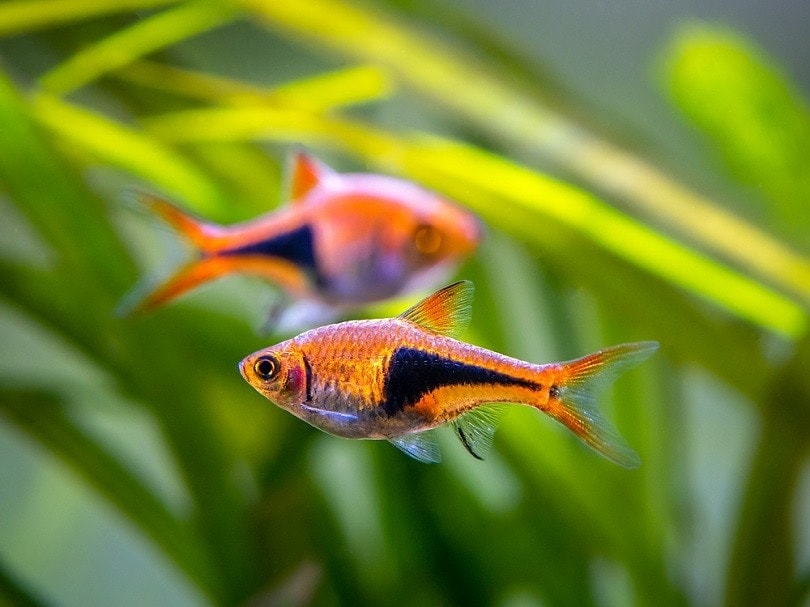
Do Rasboras Eat Plants?
In case you are worried about your rasboras eating your live aquarium plants, there is no need to be worried. Although rasboras may nibble on some live plants from time to time, this is very rare.
Generally, if they eat plant matter, they just eat plant detritus, or in other words, plant particles that are floating around in the water.
For the most part, you really have no need to be worried about your rasboras eating, damaging, or uprooting plants. That just isn’t their MO.
Plants to Avoid for Rasboras
What is important to note here is that there are around 45 different species of rasboras, so which plants that should not be put in a rasbora tank does depend on the type of rasbora.
The main thing to take note of here is that rasboras need the water to be between 73 and 82 F, with a pH level of 6.0 to 7.5, and a water hardness level of up to 12 dGH.
Therefore, any plant which cannot survive within these water parameters should not be placed in a rasbora tank. Other than that, most plants will do just fine with rasboras, and vice versa.
Conclusion
You should definitely consider adding one or more of these plants to your rasbora tank, as they will liven things up, make it feel like home, and provide your fish with some cover too.
You don’t have to fill the tank up with plants, but a couple will definitely make a big difference.
Featured Image Credit: Anna olliva, Shutterstock
 A Quick Comparison if Our Favourites in 2024
A Quick Comparison if Our Favourites in 2024







